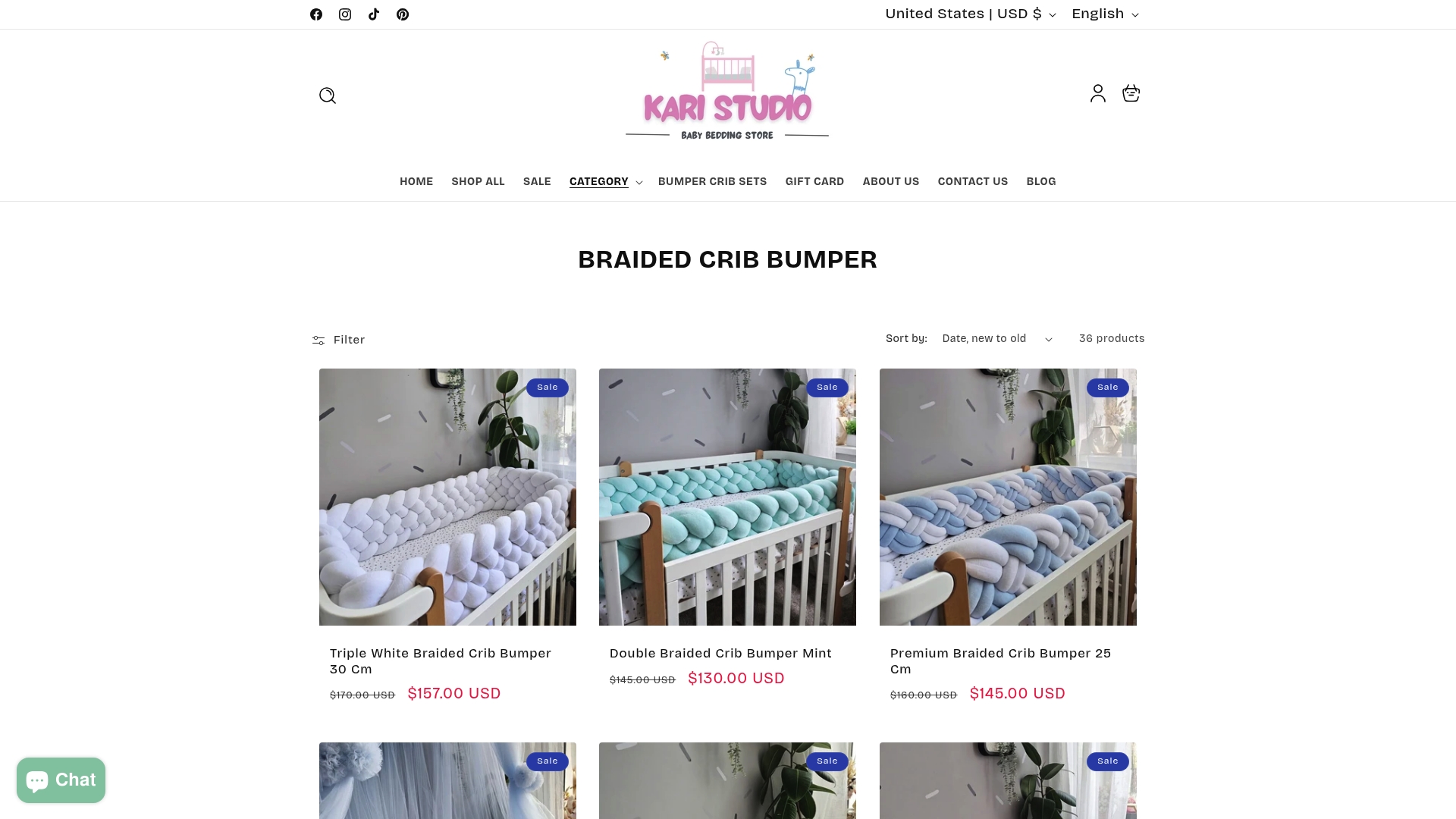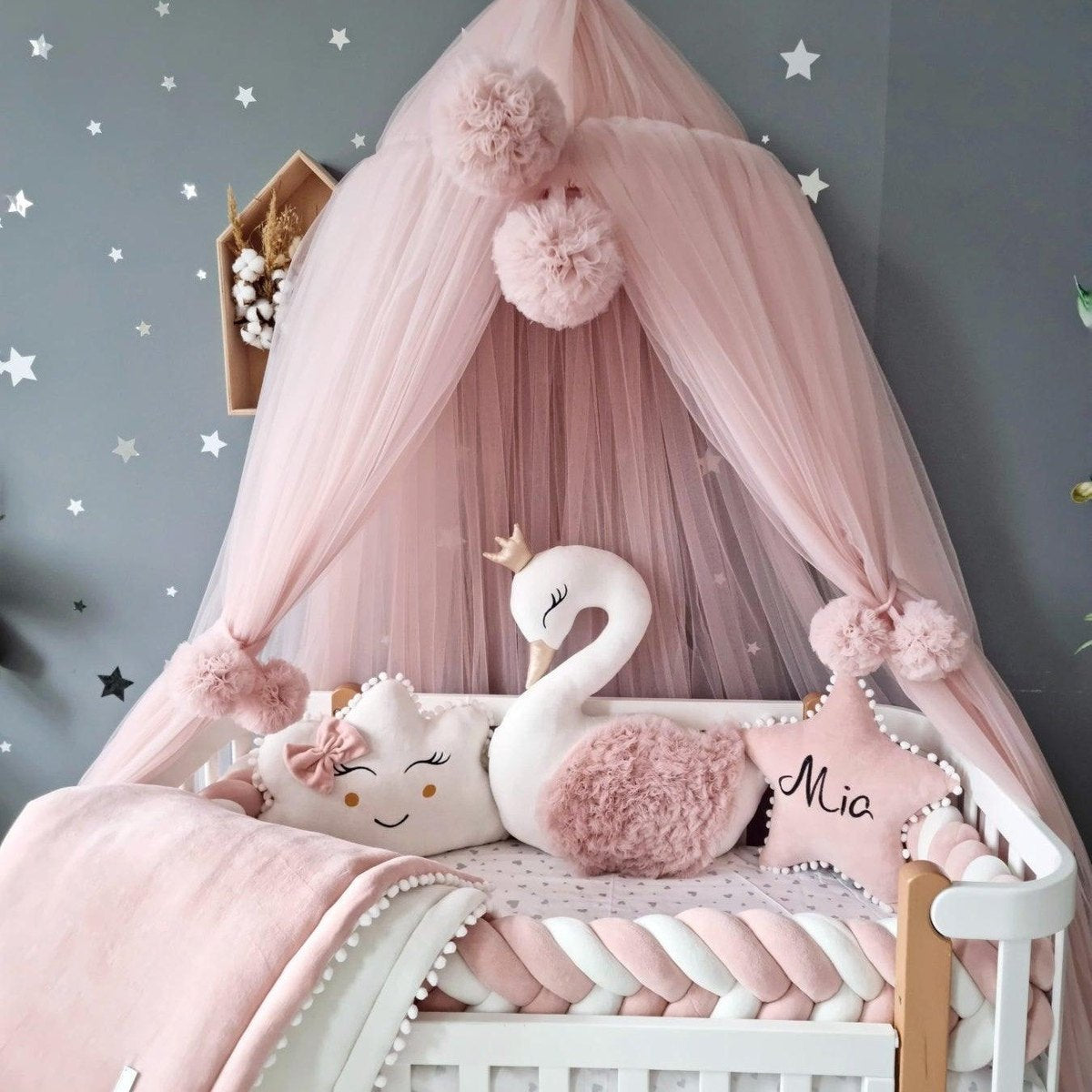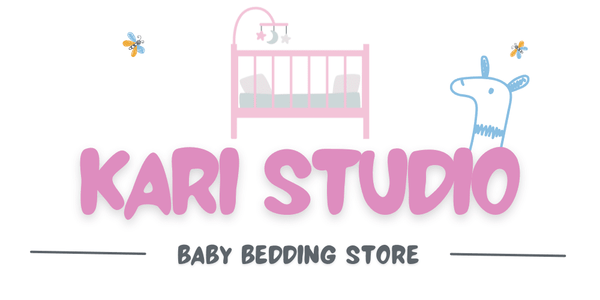Choosing the best crib bedding for your baby might seem as simple as picking soft fabrics and cute prints. But over thousands of infants are affected by unsafe bedding every year in the US alone. Most parents focus on colors or themes and completely miss the most important factor—safety standards that can protect your baby while they sleep.
Table of Contents
- Understand The Importance Of Safe Crib Bedding
- Choose Breathable Materials For Comfort
- Look For Easy-To-Clean Fabrics
- Consider Crib Size And Fitting Bedding
- Explore Different Bedding Styles And Themes
- Check For Safety Certifications
- Budgeting For Quality Crib Bedding
Quick Summary
| Takeaway | Explanation |
|---|---|
| Prioritize safety when choosing crib bedding. | Focus on selecting bedding that minimizes risks of suffocation and overheating for your infant’s safety. |
| Opt for breathable, natural materials. | Choose fabrics like cotton or bamboo that ensure proper airflow and temperature regulation, essential for your baby’s comfort. |
| Ensure a snug fit for bedding. | Properly fitting sheets prevent potential hazards such as entanglement or suffocation due to loose fabric around the crib. |
| Select easy-to-clean fabrics. | Use machine-washable and stain-resistant materials to maintain hygiene and safeguard your baby’s sleeping environment. |
| Verify safety certifications for bedding. | Look for recognized safety standards to ensure products are tested for harmful substances and meet safety requirements. |
1: Understand the Importance of Safe Crib Bedding
Choosing the right crib bedding is more than just selecting attractive colors and patterns. It’s about creating a safe sleeping environment that protects your infant from potential hazards. Every year, thousands of infants are impacted by unsafe bedding practices, making this selection critical for your baby’s wellbeing.
Safety should always be the primary consideration when selecting best crib bedding. Understanding crib mattress safety involves recognizing potential risks and making informed choices that prioritize your child’s protection. Parents must be aware of specific guidelines that reduce the chance of suffocation, overheating, and sudden infant death syndrome (SIDS).
Key considerations for safe crib bedding include:
- Tight fitting sheets that cannot come loose during sleep
- Minimal bedding with no excess blankets or pillows
- Breathable materials that prevent overheating
According to the American Academy of Pediatrics, an ideal sleep environment minimizes risks by keeping the crib clear of soft objects, loose bedding, or anything that could potentially obstruct an infant’s breathing. Babies need a firm, flat surface with minimal additional items to ensure their safety.
The best crib bedding will offer protection without compromising comfort. Look for lightweight, tightly woven fabrics that fit snugly and do not shift during nighttime movement. Breathable cotton and hypoallergenic materials can provide both safety and comfort for your little one.
Remember, your baby will spend approximately 14-16 hours sleeping daily, making the selection of safe crib bedding one of the most important decisions you will make in their early years.
2: Choose Breathable Materials for Comfort
Breathable materials are crucial when selecting the best crib bedding for your infant. These materials play a significant role in regulating body temperature and preventing overheating, which can be a serious health risk for babies. Cotton, bamboo, and muslin stand out as top choices for creating a comfortable sleeping environment.
Crib safety standards emphasize the importance of selecting fabrics that allow air circulation and moisture management. Breathable materials help maintain a consistent body temperature, reducing the risk of thermal stress and promoting more restful sleep.
Key characteristics of ideal breathable materials include:
- Natural fiber composition that allows air circulation
- Moisture-wicking properties to keep baby dry
- Lightweight and soft texture for maximum comfort
According to Stanford Children’s Health, temperature regulation is critical for infant safety. Babies cannot regulate their body temperature as effectively as adults, making the choice of breathable materials more than just a comfort issue—it’s a safety necessity.
Cotton remains the gold standard for breathable bedding. 100% organic cotton offers additional benefits, including hypoallergenic properties and reduced exposure to harmful chemicals. Bamboo fabrics are gaining popularity due to their exceptional breathability and natural antimicrobial qualities. Muslin, with its lightweight and airy weave, provides excellent temperature control and softness.
When evaluating breathable materials, consider the thread count and weave density. Lighter weaves with higher air permeability ensure better circulation and comfort. Parents should also consider seasonal variations, selecting slightly different materials for summer and winter to maintain optimal sleeping conditions.
Ultimately, the goal is to create a sleeping environment that keeps your baby comfortable, safe, and able to rest peacefully through the night.
3: Look for Easy-to-Clean Fabrics
Parents know that babies create messes—lots of them. Selecting easy-to-clean fabrics for crib bedding is not just a convenience, it’s a necessity for maintaining a hygienic sleeping environment. The best crib bedding must withstand frequent washing without losing its shape, color, or protective qualities.
Crib bumper safety guidelines also emphasize the importance of maintaining clean nursery environments. Fabrics that can be quickly and thoroughly cleaned reduce the risk of bacterial and fungal growth that could potentially harm your infant.
Key considerations for selecting easy-to-clean crib bedding materials include:
- Machine washable fabrics that tolerate high temperatures
- Stain-resistant materials that repel liquids
- Quick-drying textiles that minimize moisture retention
According to Consumer Reports, synthetic blends often provide superior cleaning advantages compared to pure natural fibers. Microfiber and polyester blends can be particularly effective, offering excellent stain resistance and durability.
When evaluating fabric cleanability, consider the washing instructions and potential shrinkage. Colorfast materials that maintain their appearance after multiple washes provide long-term value. Look for bedding with reinforced seams and high-quality stitching that can withstand repeated laundering.
Additional factors like water-resistant treatments and antimicrobial properties can further enhance the cleanliness of your baby’s sleeping environment. Some advanced fabrics now incorporate silver ion technologies that naturally inhibit bacterial growth, providing an extra layer of protection beyond standard cleaning.
Remember that frequent washing is crucial. Experts recommend having multiple bedding sets to rotate, ensuring you always have a clean option while others are being washed. Choosing fabrics that can withstand high-temperature washing and quick drying will make your parenting journey significantly more manageable.
4: Consider Crib Size and Fitting Bedding
Choosing bedding that fits perfectly is crucial for both safety and comfort. Improper fitting can create potential hazards for your infant, making precise measurements a critical step in selecting the best crib bedding. Standard cribs typically measure 52 inches long by 28 inches wide, but variations exist that demand careful attention.
How to choose the perfect crib involves understanding the nuanced differences in mattress and bedding dimensions. A properly fitted sheet should be tight and smooth, with no loose edges that could potentially become entangled or create suffocation risks.
Critical considerations for crib bedding fit include:
- Exact mattress measurements before purchasing sheets
- Snug elastic edges that prevent sheet movement
- Minimal excess fabric around mattress corners
According to the Consumer Product Safety Commission, sheets must fit securely without any slack. The standard recommendation is that fitted sheets should be no more than 1 inch longer and wider than the mattress, ensuring a tight, secure fit that eliminates potential entrapment zones.
Beyond standard sizes, parents should be aware of specialized crib types like mini cribs, convertible cribs, and portable cribs. Each of these may require specific bedding dimensions. Measurements matter: a sheet that is too large can bunch up and create dangerous sleeping conditions, while one that is too small might slip off during infant movement.
Professional tip: Always measure your specific mattress before purchasing sheets. Manufacturers can have slight variations in their standard sizing, so relying on general measurements could lead to an improper fit. Some modern cribs come with unique mattress dimensions that require specialized bedding.
Investing time in selecting the right size ensures not just comfort, but creates a safer sleeping environment for your most precious family member.
5: Explore Different Bedding Styles and Themes
Selecting crib bedding is more than a practical decision—it’s an opportunity to express creativity and set the tone for your baby’s nursery. Themes and styles can transform a simple sleeping space into a vibrant, personalized environment that reflects your family’s personality and aesthetic preferences.
Nursery decor ideas highlight the importance of cohesive design that balances visual appeal with functional considerations. Modern parents have an incredible range of options, from minimalist neutrals to bold, whimsical patterns that stimulate infant visual development.
Popular bedding theme categories include:
- Nature inspired designs with woodland creatures
- Geometric patterns offering modern visual stimulation
- Soft pastel collections creating calm environments
According to Child Development Research, visual stimulation through bedding patterns can support cognitive development. Color psychology plays a significant role, with different hues potentially influencing mood and sleep patterns.
When exploring themes, consider long-term versatility. Convertible designs that can transition as your child grows provide better value. Neutral palettes with interchangeable accent pieces allow for easy updates without complete nursery redesigns.
Contemporary bedding styles increasingly emphasize sustainability and organic materials. Parents now seek themes that not only look attractive but also align with environmental consciousness. Scandinavian-inspired minimalist designs, gender-neutral patterns, and eco-friendly textiles are gaining substantial popularity.
Remember that while aesthetics matter, safety and comfort remain paramount. Choose themes that complement your existing nursery design while maintaining the core principles of infant bedding protection and comfort.
6: Check for Safety Certifications
Safety certifications represent the gold standard in protecting your infant during sleep. Comprehensive safety testing goes far beyond aesthetic considerations, ensuring that every piece of bedding meets rigorous national and international safety standards.
Crib safety standards emphasize the critical importance of verifying official certifications before purchasing any bedding product. Parents must look beyond marketing claims and investigate genuine safety credentials.
Key safety certification indicators include:
- CPSC compliance (Consumer Product Safety Commission)
- OEKO-TEX Standard 100 certification
- ASTM International safety standards
According to the American Academy of Pediatrics, safety certifications significantly reduce infant health risks. Textile safety testing examines multiple factors including chemical composition, flame retardancy, and potential allergen presence.
Parents should specifically investigate certifications that address:
- Toxic chemical screening
- Flame resistance standards
- Hypoallergenic material verification
Certifications like OEKO-TEX guarantee that no harmful substances are present in textile products. This includes testing for prohibited and regulated chemicals, ensuring maximum protection for your infant’s sensitive skin and overall health.
Beyond official stamps, understand what these certifications actually mean. Global Organic Textile Standard (GOTS) certification, for instance, ensures organic status and confirms environmentally and socially responsible manufacturing processes.
While certifications might seem technical, they represent a critical layer of protection. Each certification is a promise of tested, verified safety that goes beyond manufacturer claims, providing parents peace of mind during their child’s most vulnerable sleeping moments.
7: Budgeting for Quality Crib Bedding
Budgeting for crib bedding requires a strategic approach that balances quality, safety, and financial practicality. Smart parents understand that investing in high-quality bedding is not an expense, but a critical investment in their child’s comfort and safety.
How to choose the perfect baby bedding set highlights the importance of understanding value beyond price tags. Quality crib bedding is not about spending the most money, but about making informed decisions that prioritize infant safety and long-term durability.
Budget considerations for crib bedding include:
- Prioritizing safety-certified materials
- Purchasing versatile, multi-purpose sets
- Investing in fewer, higher-quality pieces
According to Consumer Reports, parents can expect to spend between $50 to $200 for a complete, high-quality crib bedding set. The key is understanding what factors contribute to true value.
Economical strategies for quality bedding procurement involve:
- Selecting neutral colors for longer usability
- Considering convertible bedding options
- Watching for seasonal sales and discounts
Professional financial advisors recommend allocating approximately 3-5% of your overall nursery budget to bedding. This approach ensures you’re not overspending while still securing safe, comfortable sleeping environments for your infant.
Durability matters more than initial cost. A $100 sheet set that lasts through multiple children represents better value than repeatedly purchasing cheaper, less robust alternatives. Look for high-thread-count materials, reinforced seams, and manufacturers offering warranties.
Remember that cheaper is not always better. While budget constraints are real, compromising on safety and quality can cost more in the long run through frequent replacements or potential health risks. Prioritize certifications, material quality, and long-term usability when making your selection.
Below is a comprehensive table summarizing the main tips and considerations for choosing the best crib bedding, as discussed throughout the article.
| Tip / Consideration | Key Points & Benefits |
|---|---|
| Prioritize Safety | Select tight-fitting sheets, avoid excess bedding, and use breathable fabrics to reduce risks of suffocation and overheating. |
| Opt for Breathable Materials | Choose natural fibers like cotton, bamboo, or muslin for effective air circulation, temperature regulation, and comfort. |
| Look for Easy-to-Clean Fabrics | Select machine-washable, stain-resistant, and quick-drying materials for maintaining hygiene and making laundry easier. |
| Ensure Proper Fit | Confirm dimensions match your crib mattress exactly—snug elastic edges eliminate slack that could lead to entanglement or suffocation. |
| Explore Styles and Themes | Pick designs and patterns that fit your nursery aesthetic while considering long-term versatility and elements that support visual growth. |
| Check for Safety Certifications | Look for CPSC, OEKO-TEX, or ASTM International certifications to guarantee the bedding is free of harmful substances and meets standards. |
| Budget for Quality Bedding | Invest in high-quality, durable bedding that balances cost, safety, and value—buy fewer, certified pieces rather than cutting corners. |
Make Your Baby’s Sleep Safer and More Stylish with Kari Studio
Choosing the right crib bedding is a big decision for every parent. You want bedding that is safe, fits perfectly, and matches your nursery’s unique look. It is stressful searching for options that truly offer both protection and personality. The article showed how important it is to use tight-fitting sheets, easy-to-clean fabrics, and certified safe materials. You are looking for comfort, safety, and style in one package. Explore handmade cot bumper sets for boys or discover beautiful cot bumper sets for girls at Kari Studio. Every set is designed to give you peace of mind and help create the nursery of your dreams.

Your baby deserves the very best right from the start. Bring safety and style together by choosing from our collection of braided crib bumpers and bedding trusted by parents worldwide. Shop now at Kari Studio and give your baby the comfort and protection they need tonight.
Frequently Asked Questions
What should I consider when choosing crib bedding for safety?
When selecting crib bedding, prioritize tight-fitting sheets, minimal bedding without excess blankets or pillows, and breathable materials to minimize risks of suffocation and overheating.
Which materials are best for breathable crib bedding?
Ideal materials for breathable crib bedding include 100% organic cotton, bamboo, and muslin, as they allow air circulation, wick moisture, and prevent overheating, ensuring your baby stays comfortable during sleep.
How do I ensure my crib bedding fits properly?
To ensure proper fit, measure your crib mattress before purchasing sheets. Look for fitted sheets that are snug with elastic edges that prevent movement, ensuring no loose fabric can pose an entrapment risk.
Why are safety certifications important for crib bedding?
Safety certifications verify that crib bedding meets strict safety standards regarding materials and manufacturing processes. Certifications like CPSC compliance and OEKO-TEX ensure that products are free from harmful substances and safe for infants.
Recommended
- How to Choose the Perfect Baby Bedding Set for a Newborn Gift – KariStudio
- How to Choose Crib: A Step-by-Step Guide for Parents in 2025 – KariStudio
- How to Choose Crib Bedding: A Complete Parent’s Guide
- How to Choose the Perfect Braided Crib Bumper to Match Your Nursery Dé – KariStudio
- Sichere Kuscheltiere auswählen: 5 Schritte für Eltern 2025
- Insanely amazing Tips When Traveling with kids to Hotel - Mom on Quack

